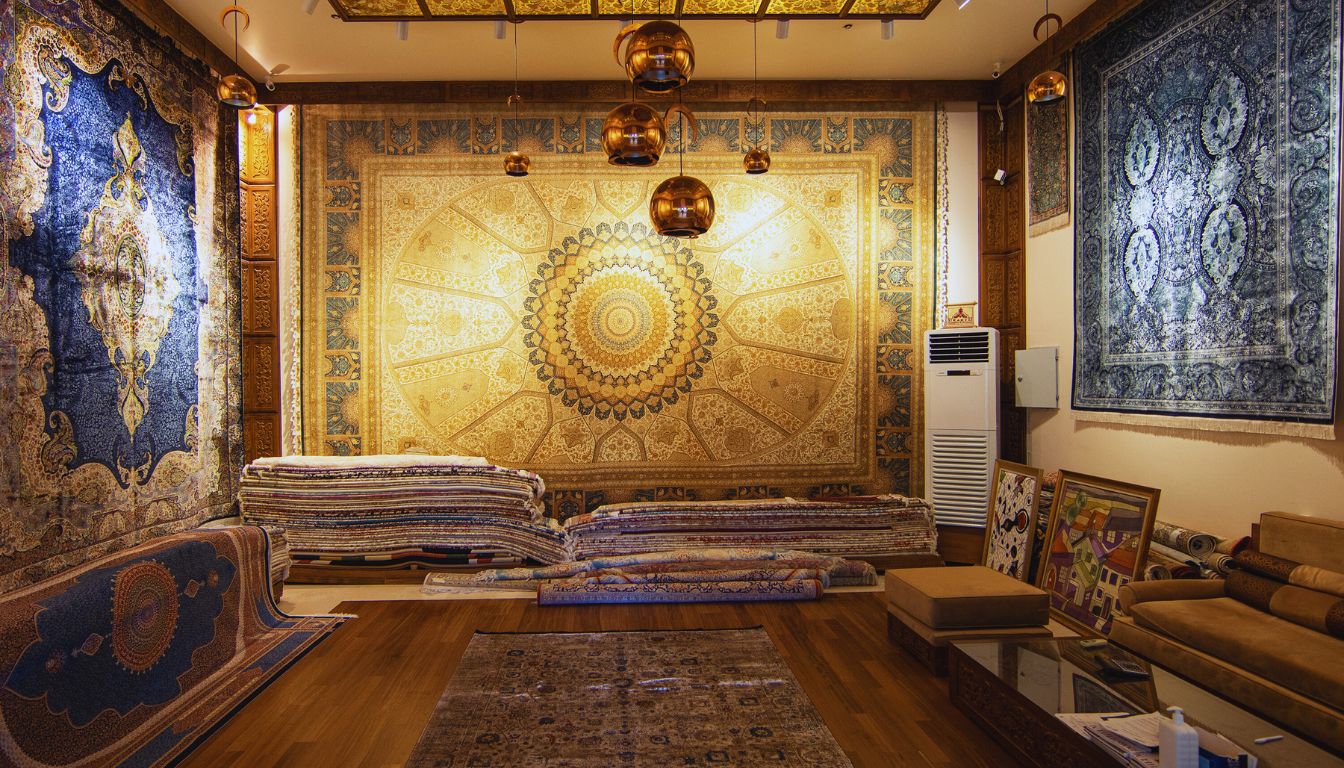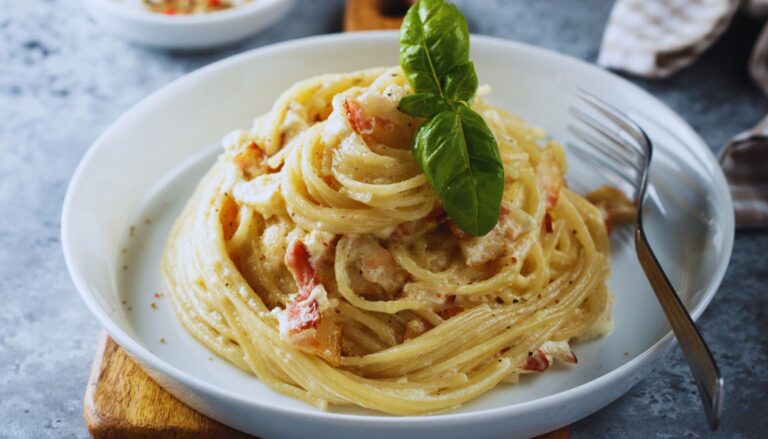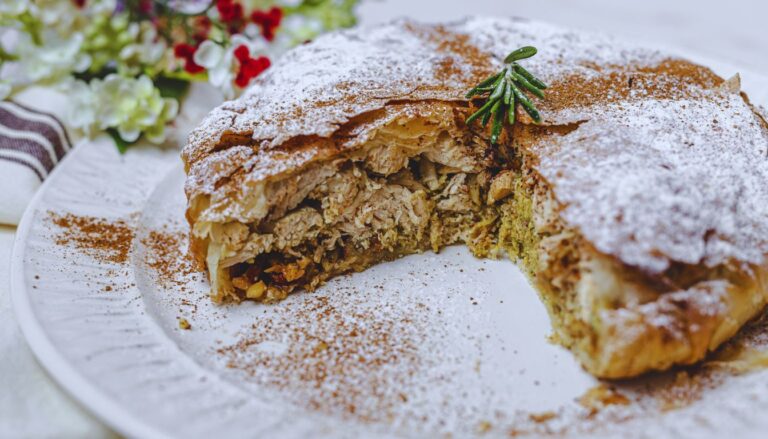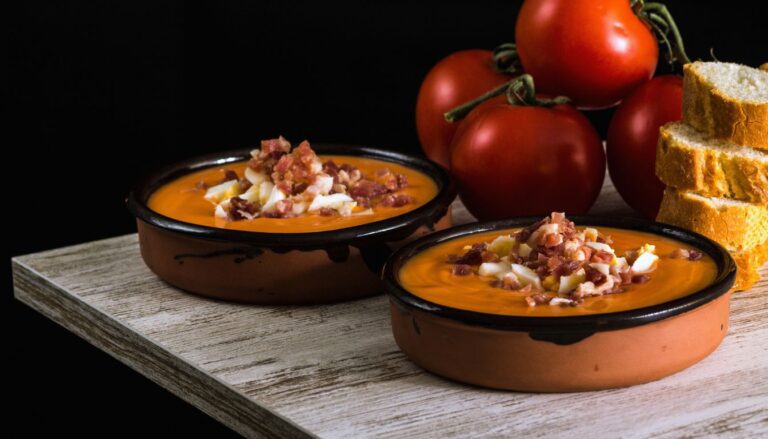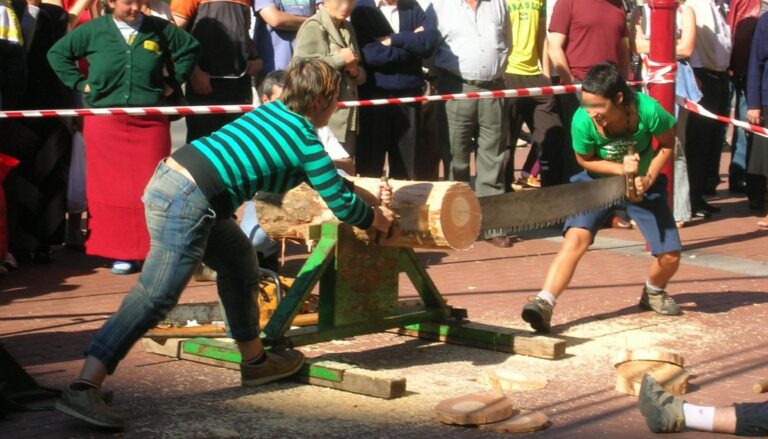Turkish carpets are more than just floor coverings; they are intricate works of art that tell stories of tradition, culture, and history. For centuries, these carpets have been an essential part of Turkish life, serving both practical and artistic purposes. From the nomadic tribes of Central Asia to the grand palaces of the Ottoman Empire, Turkish carpets have been treasured for their beauty, durability, and symbolic meaning.
In this article, we’ll explore the rich world of Turkish carpets, delving into their history, the art of weaving, the symbolism behind their patterns, and their place in modern Turkey. Whether you’re a carpet enthusiast, an art lover, or simply curious about Turkish culture, join us on this colorful journey through the warp and weft of Turkish carpet tradition.
Table of Contents
A Rich History: From Nomadic Roots to Royal Courts
The story of Turkish carpets begins thousands of years ago with the nomadic tribes of Central Asia. These early Turkic peoples developed the art of carpet weaving as a practical solution to the harsh conditions of nomadic life. Carpets provided insulation from the cold ground, could be easily rolled up for transport, and served as decorative elements in their tents.
As these nomadic tribes migrated westward into Anatolia (modern-day Turkey) in the 11th century, they brought their weaving traditions with them. Over time, the art of carpet making evolved and flourished in this new land, influenced by local cultures and the needs of a more settled lifestyle.
During the Ottoman Empire (1299-1922), Turkish carpet making reached new heights of artistry and prestige. Carpets became important symbols of wealth and status, adorning the floors of mosques, palaces, and wealthy homes. The Ottoman court established royal workshops to produce carpets of the highest quality, often incorporating precious materials like silk and gold threads.
One of the most famous episodes in Turkish carpet history occurred in the 15th century when Ottoman carpets began appearing in European paintings. These “Holbein carpets,” named after the artist Hans Holbein the Younger who frequently depicted them, became highly sought after by European nobility and marked the beginning of a thriving export trade.
Throughout history, Turkish carpets have been more than just commodities. They have served as diplomatic gifts, dowry items, and treasured family heirlooms, each one carrying within its fibers the stories and traditions of its makers.
Types of Turkish Carpets: Pile Rugs and Flat Weaves
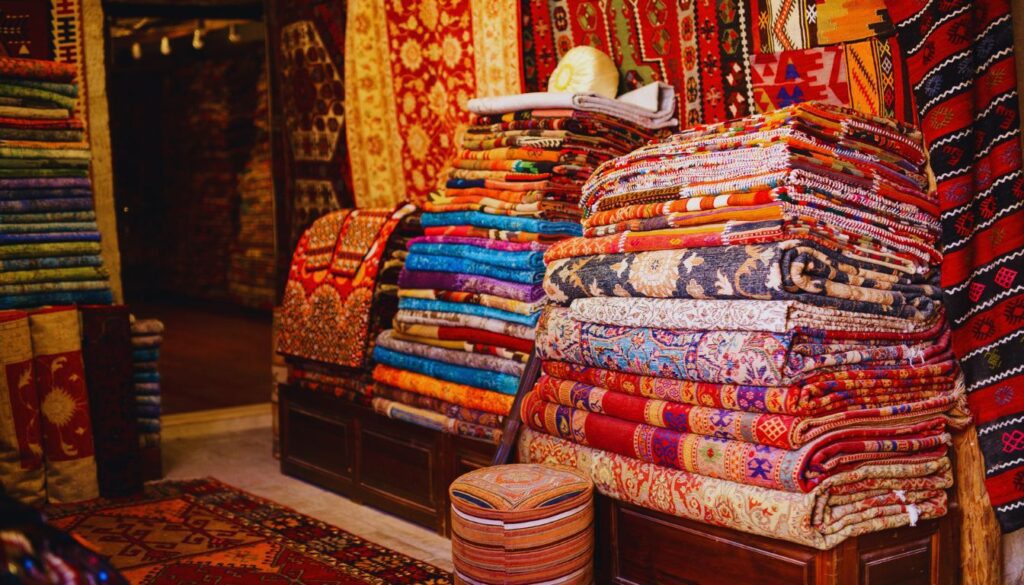
Turkish carpets can be broadly categorized into two main types: pile rugs and flat weaves. Each type has its own unique characteristics and production methods.
Pile Rugs:
Pile rugs, also known as knotted carpets, are what most people think of when they imagine a traditional Turkish carpet. These rugs are made by knotting short pieces of yarn onto the warp threads of the carpet’s foundation. The knots are then cut to create a soft, plush surface.
There are two main types of knots used in Turkish pile rugs:
- The Turkish (or Ghiordes) knot: This symmetrical knot is wrapped around two warp threads, creating a very durable carpet.
- The Persian (or Senneh) knot: This asymmetrical knot is used less frequently in Turkish carpets but allows for more intricate designs.
Pile rugs can be further categorized based on their place of origin, such as Hereke, Uşak, or Milas carpets, each with its own distinctive style and patterns.
Flat Weaves:
Flat woven carpets, known as kilims, are made without knots. Instead, the weft threads are tightly woven through the warp to create a flat, thin carpet. Kilims are lighter and more flexible than pile rugs, making them popular for use as wall hangings, furniture covers, and prayer rugs.
There are several types of flat weaves in Turkish tradition:
- Kilim: The most common type, where the weft is discontinuous, creating slits where colors change.
- Cicim: A type of kilim with extra embroidery on top of the flat weave.
- Zili: Similar to cicim, but with more extensive supplementary weft patterning.
- Sumak: A weft-wrapping technique that creates a smooth surface on one side and a rough texture on the other.
Each type of carpet, whether pile or flat weave, has its own unique beauty and is suited to different uses and preferences.
The Art of Weaving: Techniques and Tools
The creation of a Turkish carpet is a complex process that requires skill, patience, and artistic vision. While modern carpet production often involves machine weaving, traditional hand-woven carpets are still highly prized for their quality and uniqueness.
The basic tools of carpet weaving have remained largely unchanged for centuries:
- Loom: The foundation of carpet weaving. Traditional Turkish carpets are woven on vertical looms, which can be adjusted based on the desired size of the carpet.
- Kirkit (or Comb beater): A heavy, comb-like tool used to beat down the weft threads and knots to create a tight, durable weave.
- Scissors: Used to trim the pile to an even length after knotting.
- Spinning wheel: Used to spin wool or silk into yarn.
The weaving process begins with setting up the warp threads on the loom. These vertical threads form the foundation of the carpet. The weaver then begins the intricate process of creating the design:
For pile rugs:
- The weaver ties knots around pairs of warp threads according to the carpet’s design.
- After each row of knots, one or more weft threads are passed through and beaten down with the kirkit.
- This process is repeated until the carpet reaches the desired length.
- Finally, the pile is trimmed to an even length.
For kilims:
- The weaver passes the weft threads over and under the warp threads in various patterns.
- Different colored weft threads are used to create the design.
- The weft is beaten down tightly with the kirkit after each pass.
The density of knots or weave, measured in knots per square inch, is one indicator of a carpet’s quality. High-quality carpets can have over 1000 knots per square inch and take months or even years to complete.
Colors and Dyes: Nature’s Palette
The vibrant colors of Turkish carpets are one of their most striking features. Traditionally, these colors were derived from natural sources, creating a rich, warm palette that has become synonymous with Turkish carpet design.
Some common natural dyes used in Turkish carpets include:
- Red: Obtained from madder root or cochineal insects
- Blue: Extracted from indigo plants
- Yellow: Derived from weld, saffron, or pomegranate rind
- Green: Created by overdying blue with yellow
- Brown and Black: Made from walnut shells or oak apples
The process of natural dyeing is an art in itself. Dyers must have extensive knowledge of local plants and dyeing techniques to achieve consistent, colorfast results. The wool or silk is mordanted (treated with a metallic compound) to help the dye adhere, then immersed in dye baths.
While chemical dyes have largely replaced natural dyes in modern carpet production due to their consistency and lower cost, some traditional workshops still use natural dyes for their unique qualities and historical authenticity.
The colors used in a carpet can provide clues about its origin and age. For example, certain regions are known for their distinctive color palettes, and the introduction of particular synthetic dyes can help date a carpet.
Symbols and Motifs: The Language of Carpets
Turkish carpets are not just beautiful; they’re also full of meaning. The patterns and motifs woven into these carpets often tell stories, express wishes, or represent important aspects of Turkish culture and Islamic tradition.
Some common symbols and their meanings include:
- Tree of Life: Represents the connection between earth and heaven, often used in prayer rugs.
- Bird: Symbolizes happiness and joy, or in some cases, power and strength.
- Star and Crescent: While now associated with Islam, this symbol predates the religion and can represent paradise.
- Evil Eye (Nazar): A protective symbol believed to ward off malevolent glares.
- Hands on Hips (Elibelinde): Represents femininity and motherhood.
- Ram’s Horn: Symbolizes masculinity, power, and fertility.
Geometric patterns are also common in Turkish carpets, particularly in kilims. These include:
- Squares: Represent the four elements (earth, air, fire, water)
- Triangles: Can symbolize prayer or, when arranged point-to-point, an hourglass shape representing feminine wisdom
- Zigzags: Often represent flowing water
The arrangement of these symbols and patterns can vary by region and over time. Reading these “carpet languages” is a complex skill that carpet experts develop over years of study and experience.
Regional Styles: A Tour of Turkish Carpet-Making Centers
Turkey has numerous carpet-making centers, each with its own distinctive style. These regional differences are part of what makes Turkish carpets so diverse and interesting. Here’s a brief tour of some key carpet-making regions:
- Hereke: Known for extremely fine, intricate carpets often made with silk. Hereke carpets were favored by the Ottoman court and are still considered among the finest in the world.
- Uşak: One of the oldest carpet-making centers, known for large, geometric designs. The famous “Holbein” carpets originated here.
- Milas: Recognizable by their typically red or blue backgrounds and geometric motifs. Milas carpets often feature the “Milas prayer arch” design.
- Bergama: Known for bold geometric designs and bright colors. Bergama carpets often incorporate symbolic motifs like the Tree of Life.
- Konya: One of the oldest weaving centers, known for bold, geometric designs in bright colors. Konya is particularly famous for its kilims.
- Sivas: Produces both pile carpets and kilims, often featuring floral designs.
- Kayseri: Known for finely woven carpets, often made with silk and featuring intricate floral patterns.
Each of these regions, and many others not listed here, contribute to the rich tapestry of Turkish carpet traditions. The diversity of styles reflects Turkey’s complex history and the many cultural influences that have shaped its art over the centuries.
The Carpet-Making Process: From Wool to Finished Product
Creating a Turkish carpet is a multi-step process that begins long before the first knot is tied. Here’s an overview of the journey from raw materials to finished carpet:
- Gathering Materials: The process begins with shearing sheep for wool. The best carpets use wool from sheep raised in high altitudes, which produces longer, more durable fibers.
- Cleaning and Carding: The raw wool is washed to remove dirt and lanolin, then carded (combed) to align the fibers.
- Spinning: The carded wool is spun into yarn using a spinning wheel or drop spindle.
- Dyeing: The yarn is dyed using either natural or synthetic dyes.
- Design: The carpet design is created, often drawn on graph paper where each square represents a knot.
- Warping the Loom: The warp threads are strung vertically on the loom.
- Weaving: The weaver begins the painstaking process of creating the carpet, whether by knotting pile or weaving a kilim.
- Finishing: Once weaving is complete, the carpet is removed from the loom. Pile carpets are sheared to even the surface.
- Washing: The carpet is washed to remove any dirt accumulated during weaving and to soften the wool.
- Drying and Stretching: The carpet is dried in the sun and may be stretched to ensure it lays flat.
This entire process can take anywhere from a few weeks for a small, simple kilim to several years for a large, intricate pile carpet. The time and skill involved in creating these carpets contribute to their value as both functional items and works of art.
Turkish Carpets in Literature and Art
Turkish carpets have long captured the imagination of artists and writers, both within Turkey and around the world. Their intricate designs and rich cultural associations have made them powerful symbols in various forms of artistic expression.
In Literature:
Turkish carpets often appear in literature as symbols of exoticism, luxury, or magical properties. One of the most famous literary references is in “One Thousand and One Nights,” where flying carpets transport characters on fantastic journeys. In Western literature, writers like Orhan Pamuk have used carpets as metaphors for the complexity of Turkish culture and history.
In Painting:
As mentioned earlier, Turkish carpets began appearing in European paintings in the 15th century. Artists like Hans Holbein the Younger, Lorenzo Lotto, and Johannes Vermeer frequently included Turkish carpets in their works, using them to add an element of luxury and exoticism to their scenes. These paintings have become valuable historical documents, providing information about carpet designs that may no longer exist in physical form.
In Modern Art:
Contemporary artists continue to be inspired by Turkish carpets. Some incorporate traditional carpet motifs into modern paintings or sculptures, while others use actual carpets as a medium for creating new artworks. There’s even a trend of “carpet art” where traditional carpets are altered or repurposed to create contemporary pieces.
The presence of Turkish carpets in various art forms underscores their cultural significance and their power as symbols of Turkish heritage and craftsmanship.
The Modern Turkish Carpet Industry: Tradition Meets Innovation
While traditional hand-weaving techniques are still practiced and highly valued, the Turkish carpet industry has also embraced modern production methods to meet global demand.
Machine-made carpets now account for a significant portion of Turkey’s carpet exports. These carpets can be produced much more quickly and at a lower cost than hand-woven carpets, making them accessible to a wider market. However, they often lack the uniqueness and character of hand-woven pieces.
There’s also a growing trend of “vintage” or “distressed” carpets, where new carpets are chemically treated to look old. While popular in some markets, this practice is controversial among purists who value the natural aging process of traditional carpets.
Innovation in the industry isn’t limited to production methods. Many designers are creating contemporary carpets that blend traditional Turkish motifs with modern aesthetics. These carpets appeal to customers who appreciate Turkish craftsmanship but prefer more modern designs for their homes.
Sustainability is another area of innovation. Some producers are experimenting with eco-friendly dyes and sustainable wool sources. There’s also a growing market for carpets made from recycled materials.
Despite these changes, there remains a strong market for high-quality, hand-woven carpets. Many workshops continue to produce carpets using traditional methods, often focusing on high-end, custom pieces for collectors and luxury markets.
The challenge for the Turkish carpet industry in the 21st century is to balance tradition and innovation, preserving the rich heritage of Turkish carpet-making while adapting to changing global tastes and market demands.
Caring for Your Turkish Carpet: Tips and Tricks
Whether you own a valuable antique or a modern machine-made carpet, proper care can help your Turkish carpet maintain its beauty for years to come. Here are some tips:
- Regular Vacuuming: Vacuum your carpet at least once a week to remove dirt and prevent it from settling into the fibers. For delicate or antique carpets, use a vacuum without a beater bar.
- Rotation: Rotate your carpet every few months to ensure even wear.
- Spot Cleaning: Clean spills immediately by blotting (not rubbing) with a clean, damp cloth.
- Professional Cleaning: Have your carpet professionally cleaned every 3-5 years, or more often for high-traffic areas.
- Avoid Direct Sunlight: Prolonged exposure to direct sunlight can fade the colors of your carpet. Use curtains or blinds to protect it.
- Use a Carpet Pad: A good quality pad under your carpet can help prevent wear and provide extra cushioning.
- Storage: If you need to store your carpet, clean it first, roll it (don’t fold), and wrap it in breathable fabric. Never store carpets in plastic, which can trap moisture.
- Repairs: Address any tears or unraveling promptly to prevent further damage. For valuable carpets, consult a professional restorer.
Remember, each carpet is unique and may have specific care requirements. When in doubt, consult with a carpet expert or the seller for specific care instructions.
Conclusion: The Enduring Legacy of Turkish Carpets
Turkish carpets represent far more than just floor coverings or decorative items. They are a living testament to centuries of cultural heritage, artistic expression, and craftsmanship. From the nomadic tribes of Central Asia to the grand palaces of the Ottoman Empire, and now to homes and museums around the world, Turkish carpets have woven their way through history, carrying with them stories, traditions, and a unique artistic language.
The art of Turkish carpet making encompasses a wealth of knowledge and skill. It involves an intimate understanding of materials, from the quality of wool to the intricacies of natural dyes. It requires mastery of complex weaving techniques passed down through generations. And perhaps most importantly, it embodies a rich symbolic language, where every motif and pattern carries meaning, turning each carpet into a narrative of cultural identity and personal expression.
In today’s rapidly changing world, Turkish carpets stand as a bridge between past and present. While modern production methods and changing consumer preferences have transformed parts of the industry, there remains a deep appreciation for traditionally crafted carpets. Museums, collectors, and homeowners alike value these carpets not just for their beauty, but for their historical and cultural significance.
The future of Turkish carpet making lies in finding a balance between preserving traditional methods and adapting to contemporary needs. Innovations in sustainable production, modern designs that incorporate traditional elements, and efforts to keep ancient weaving techniques alive all play a part in ensuring that this art form continues to thrive.
For those who own or admire Turkish carpets, each piece offers a window into a rich cultural heritage. Every knot and woven thread represents hours of skilled work, centuries of tradition, and the artistic vision of its creators. Whether hanging on a wall, gracing a floor, or carefully preserved in a collection, each Turkish carpet tells a story – of art, of history, and of the enduring human desire to create beauty in the world around us.
As we’ve explored in this journey through the world of Turkish carpets, these intricate creations are much more than mere textiles. They are a tapestry of Turkish culture itself, weaving together threads of history, art, and tradition into a legacy that continues to captivate and inspire people around the world. In every Turkish carpet, we find not just a product, but a piece of living history – a testament to the skill, creativity, and cultural richness of the people who have been creating these masterpieces for centuries.
Discover the must-visit cultural destinations of Turkish culture

